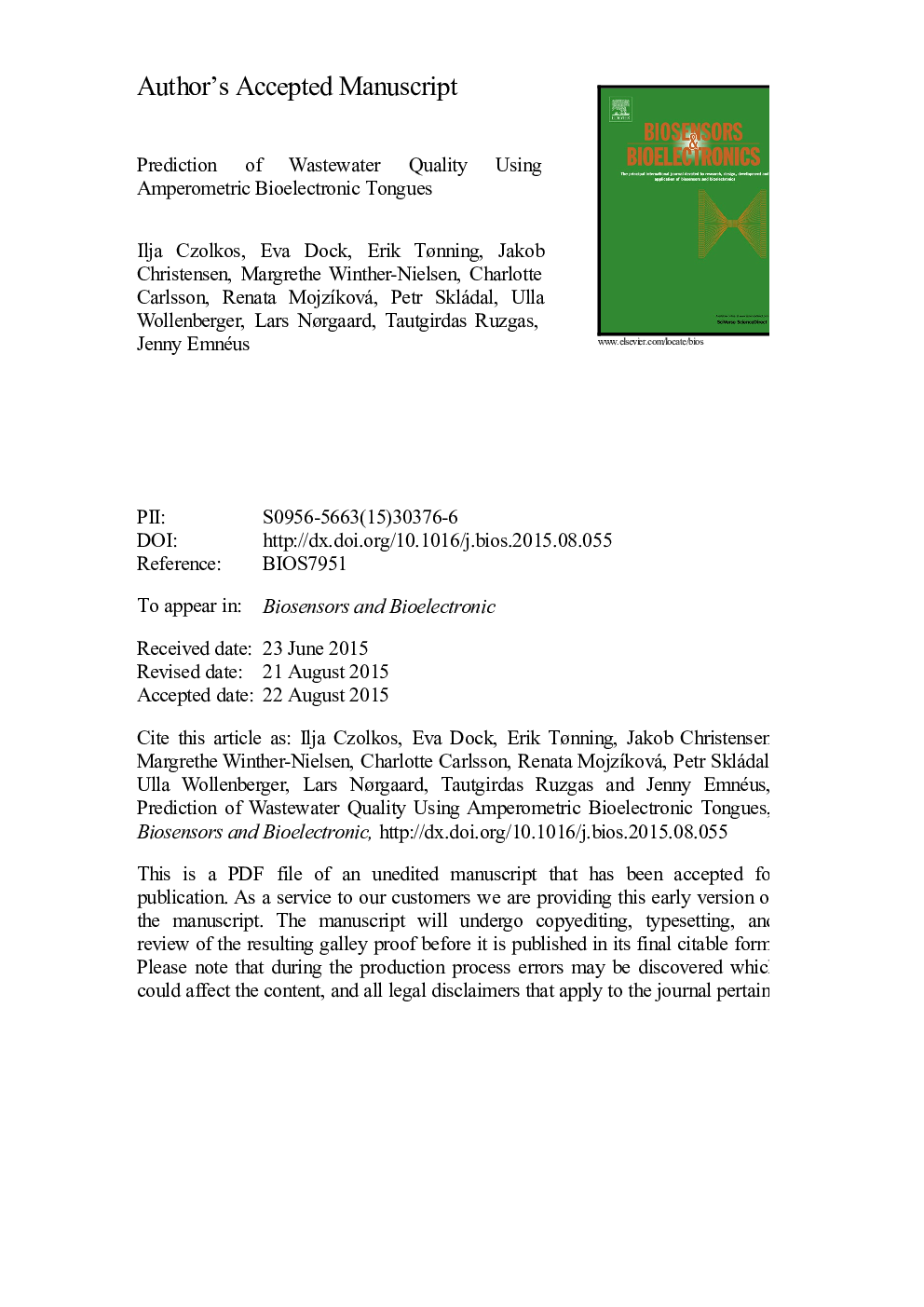| Article ID | Journal | Published Year | Pages | File Type |
|---|---|---|---|---|
| 7231482 | Biosensors and Bioelectronics | 2016 | 5 Pages |
Abstract
Wastewater samples from a Swedish chemi-thermo-mechanical pulp (CTMP) mill collected at different purification stages in a wastewater treatment plant (WWTP) were analyzed with an amperometric enzyme-based biosensor array in a flow-injection system. In order to resolve the complex composition of the wastewater, the array consists of several sensing elements which yield a multidimensional response. We used principal component analysis (PCA) to decompose the array's responses, and found that wastewater with different degrees of pollution can be differentiated. With the help of partial least squares regression (PLS-R), we could link the sensor responses to the Microtox® toxicity parameter, as well as to global organic pollution parameters (COD, BOD, and TOC). From investigating the influences of individual sensors in the array, it was found that the best models were in most cases obtained when all sensors in the array were included in the PLS-R model. We find that fast simultaneous determination of several global environmental parameters characterizing wastewaters is possible with this kind of biosensor array, in particular because of the link between the sensor responses and the biological effect onto the ecosystem into which the wastewater would be released. In conjunction with multivariate data analysis tools, there is strong potential to reduce the total time until a result is yielded from days to a few minutes.
Keywords
Related Topics
Physical Sciences and Engineering
Chemistry
Analytical Chemistry
Authors
Ilja Czolkos, Eva Dock, Erik Tønning, Jakob Christensen, Margrethe Winther-Nielsen, Charlotte Carlsson, Renata MojzÃková, Petr Skládal, Ulla Wollenberger, Lars Nørgaard, Tautgirdas Ruzgas, Jenny Emnéus,
